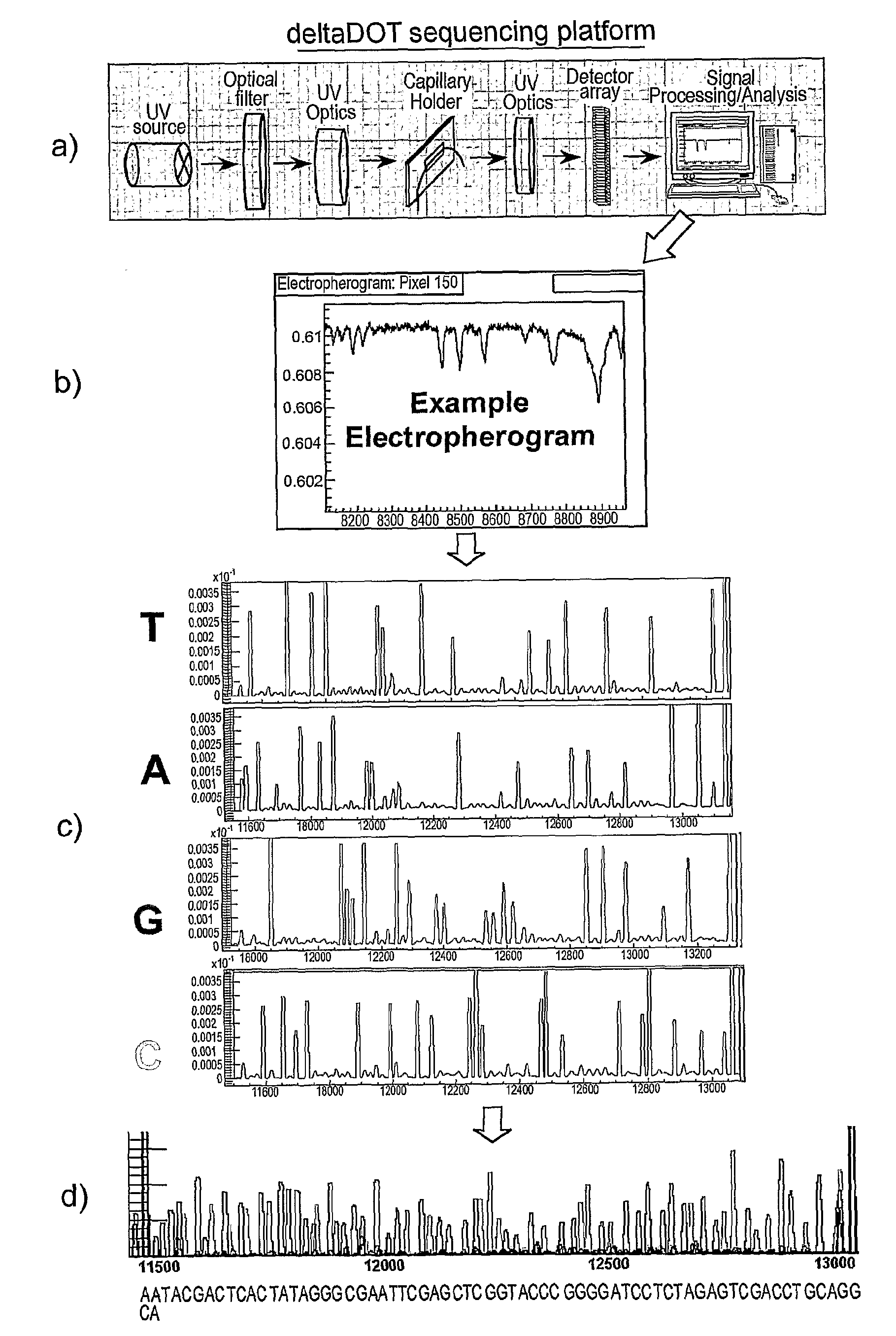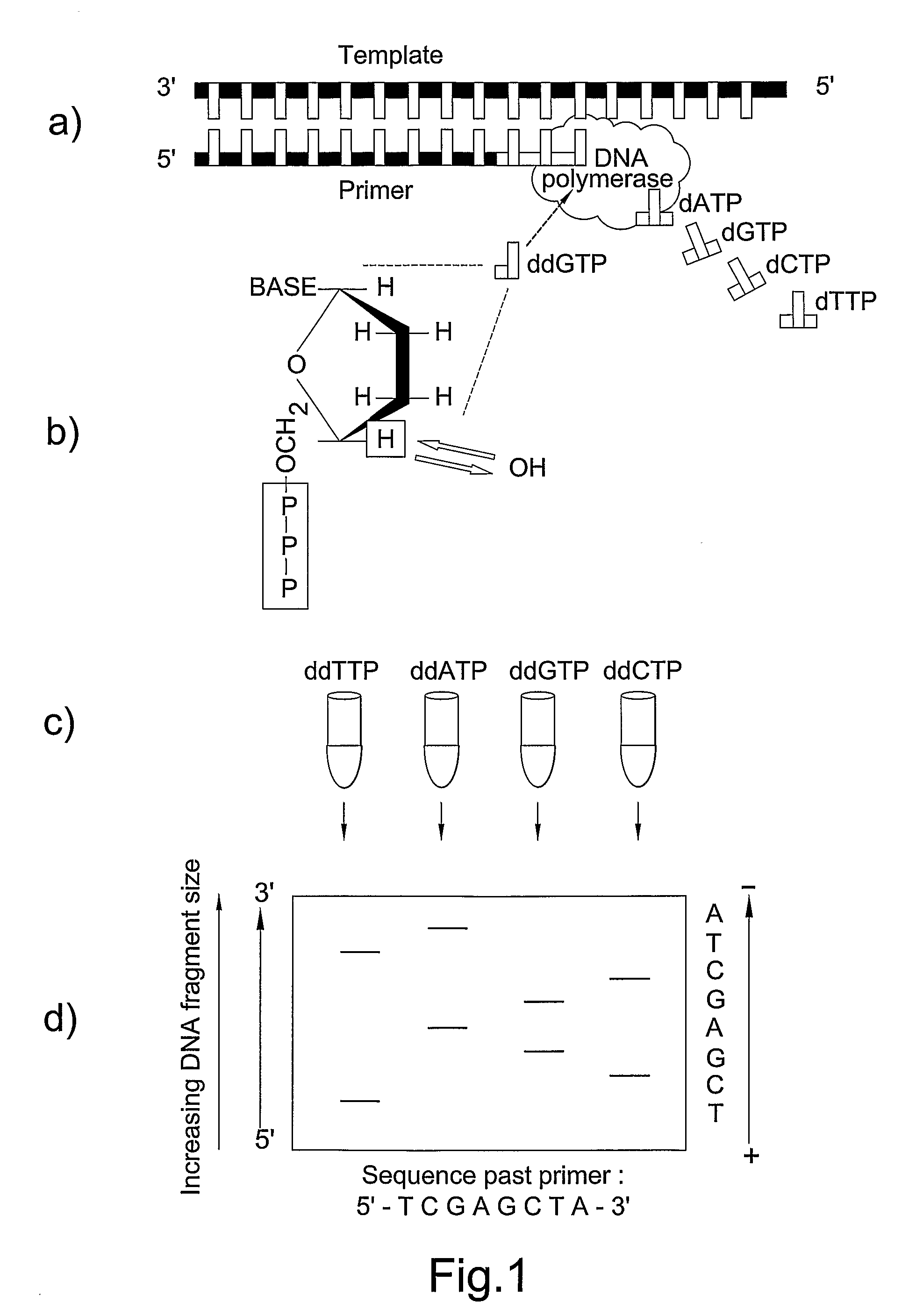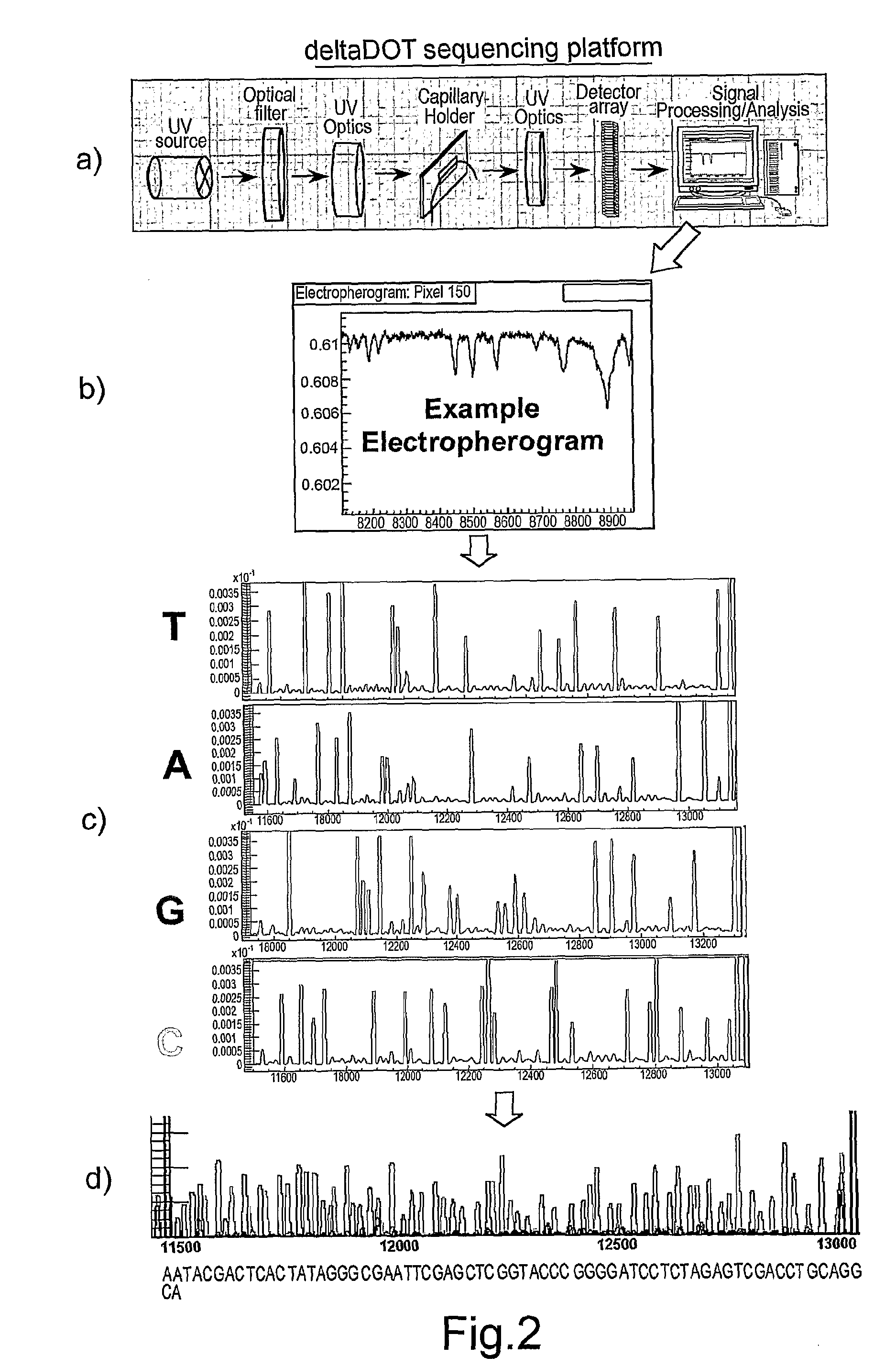Sequencing
a technology of nucleic acids and sequencing, applied in the field of polymer improvement of polymer sequencing, can solve the problems of unsatisfactory, unsatisfactory, and add to the cost and complexity of the sequencing process, so as to improve the reliability and ease of sequencing
- Summary
- Abstract
- Description
- Claims
- Application Information
AI Technical Summary
Benefits of technology
Problems solved by technology
Method used
Image
Examples
Embodiment Construction
[0058]The present invention makes use of the realisation that termination artefacts created during the chain termination sequencing method are consistent between reactions performed on the same template with the same polymerase. We have determined that these artefacts may thus be used as intrinsic markers for alignment of sequencing reactions. Here we describe the background to the Sanger chain termination sequencing method, along with the label free intrinsic imaging system used by the present inventors. We then illustrate how the artefacts may be used to align sequencing runs.
[0059]Referring first of all to FIG. 1, this illustrates the Sanger chain termination method. Although there are many variations of the method, the basic principle remains the same.
[0060]FIG. 1a. An oligonucleotide known as a primer is specifically designed to anneal to a complementary section of DNA template. The DNA template is single stranded, having been chemically or thermally denatured. An enzyme, DNA p...
PUM
| Property | Measurement | Unit |
|---|---|---|
| wavelength | aaaaa | aaaaa |
| concentration | aaaaa | aaaaa |
| chain length | aaaaa | aaaaa |
Abstract
Description
Claims
Application Information
 Login to View More
Login to View More - R&D
- Intellectual Property
- Life Sciences
- Materials
- Tech Scout
- Unparalleled Data Quality
- Higher Quality Content
- 60% Fewer Hallucinations
Browse by: Latest US Patents, China's latest patents, Technical Efficacy Thesaurus, Application Domain, Technology Topic, Popular Technical Reports.
© 2025 PatSnap. All rights reserved.Legal|Privacy policy|Modern Slavery Act Transparency Statement|Sitemap|About US| Contact US: help@patsnap.com



